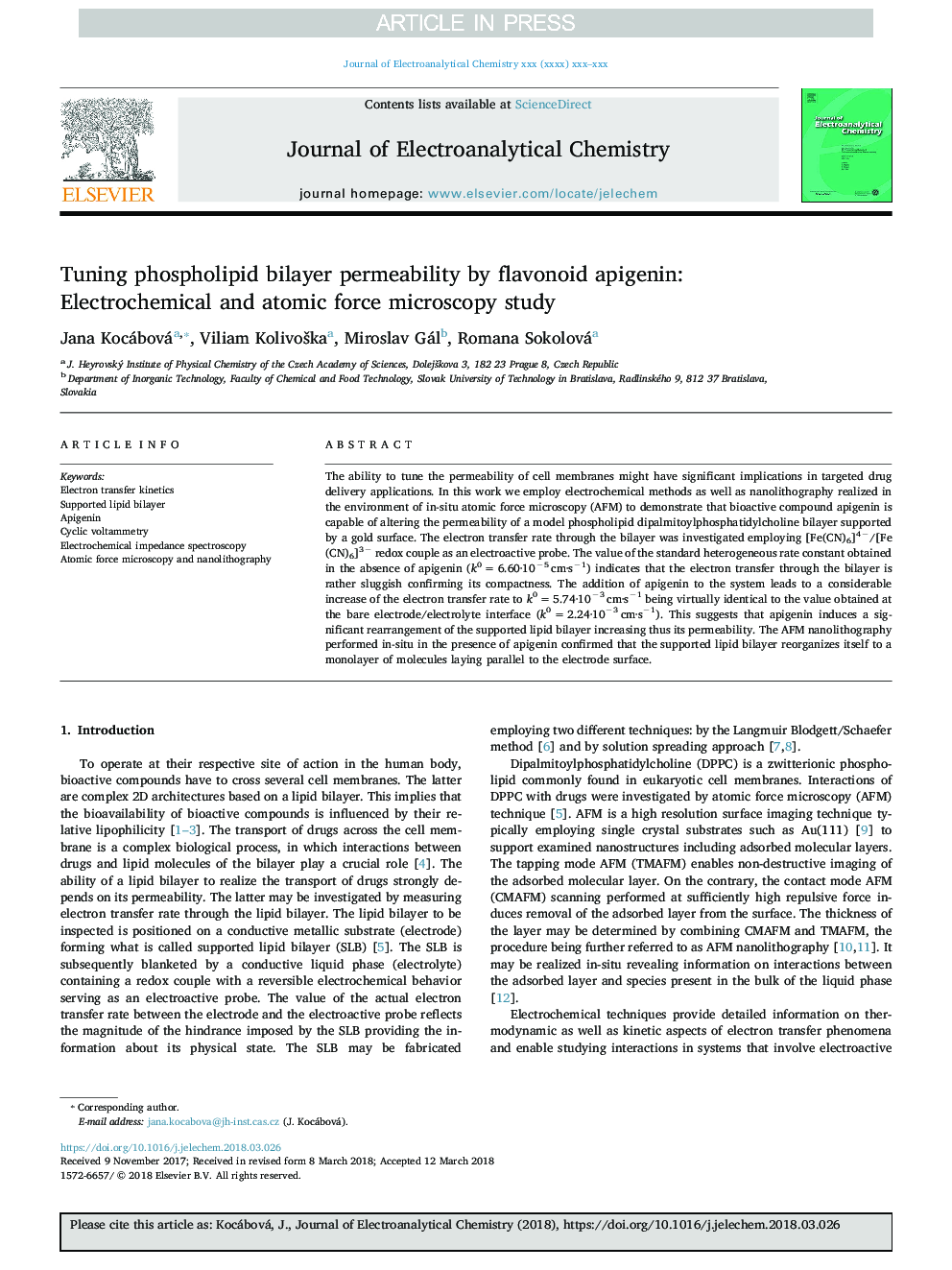| Article ID | Journal | Published Year | Pages | File Type |
|---|---|---|---|---|
| 6661635 | Journal of Electroanalytical Chemistry | 2018 | 6 Pages |
Abstract
The ability to tune the permeability of cell membranes might have significant implications in targeted drug delivery applications. In this work we employ electrochemical methods as well as nanolithography realized in the environment of in-situ atomic force microscopy (AFM) to demonstrate that bioactive compound apigenin is capable of altering the permeability of a model phospholipid dipalmitoylphosphatidylcholine bilayer supported by a gold surface. The electron transfer rate through the bilayer was investigated employing [Fe(CN)6]4â/[Fe(CN)6]3â redox couple as an electroactive probe. The value of the standard heterogeneous rate constant obtained in the absence of apigenin (k0â¯=â¯6.60â10â5â¯cm·sâ1) indicates that the electron transfer through the bilayer is rather sluggish confirming its compactness. The addition of apigenin to the system leads to a considerable increase of the electron transfer rate to k0â¯=â¯5.74â10â3â¯cm·sâ1 being virtually identical to the value obtained at the bare electrode/electrolyte interface (k0â¯=â¯2.24â10â3â¯cm·sâ1). This suggests that apigenin induces a significant rearrangement of the supported lipid bilayer increasing thus its permeability. The AFM nanolithography performed in-situ in the presence of apigenin confirmed that the supported lipid bilayer reorganizes itself to a monolayer of molecules laying parallel to the electrode surface.
Keywords
Related Topics
Physical Sciences and Engineering
Chemical Engineering
Chemical Engineering (General)
Authors
Jana Kocábová, Viliam KolivoÅ¡ka, Miroslav Gál, Romana Sokolová,
